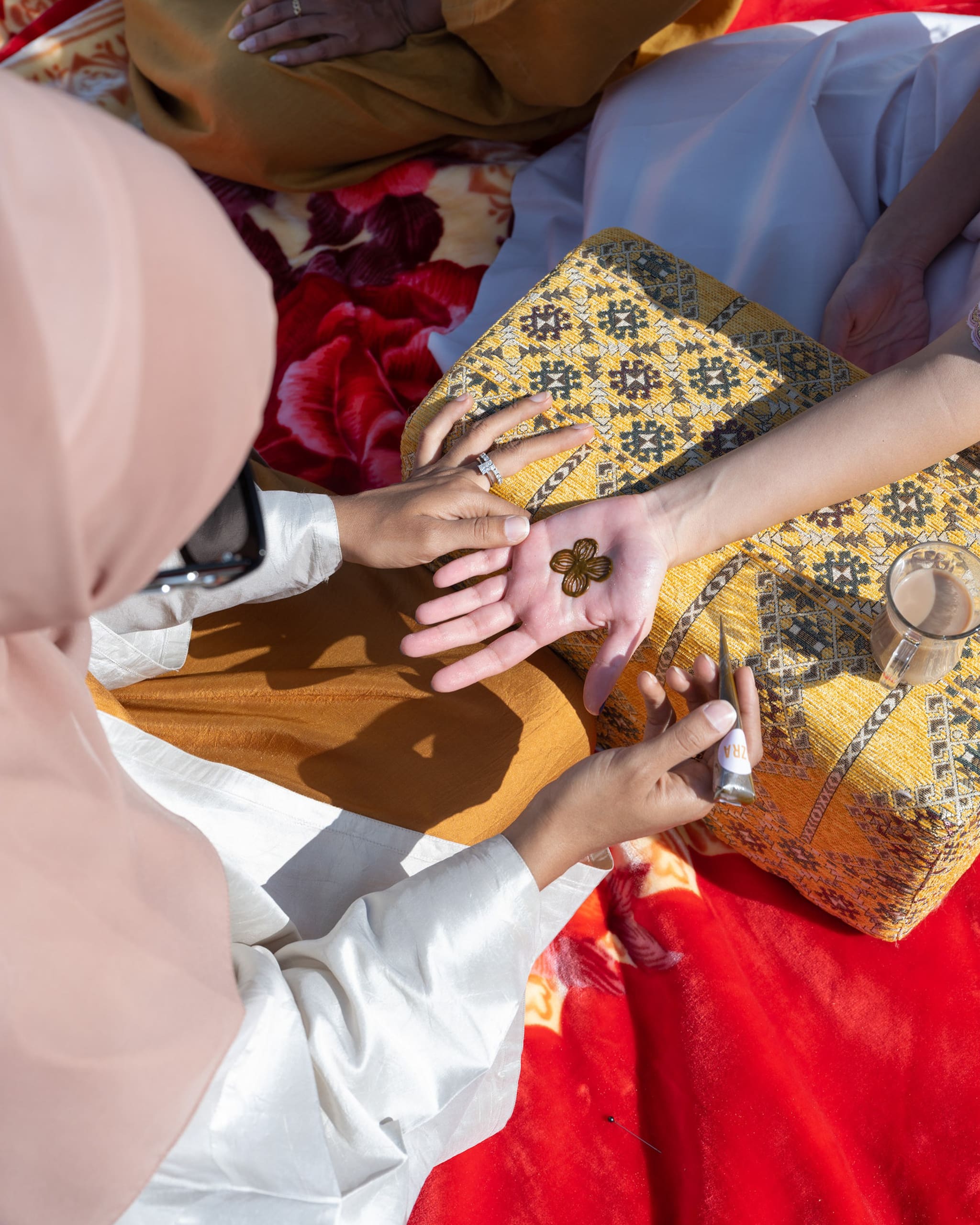Azra pauses to admire her handiwork as she applies henna to Nouri’s palm. Photographed by Farah Al Qasimi
A meaningful exploration of the history and evolution of henna, told through the mesmerizing designs of artists old and new.
It’s hard to pin down the exact origin of the ancient body art of henna. Some speculate that Cleopatra, perhaps the first name that comes to mind when one thinks of the words “consummate beauty,” used it to adorn her body. Scholars widely believe that Egyptians would paint the hair and nails of their deceased with henna before having them mummified and entombed. Others claim that the art form’s earliest documented application exists within ancient Indian texts, postulating that mehendi, as henna’s known in Hindi, had its genesis in India.
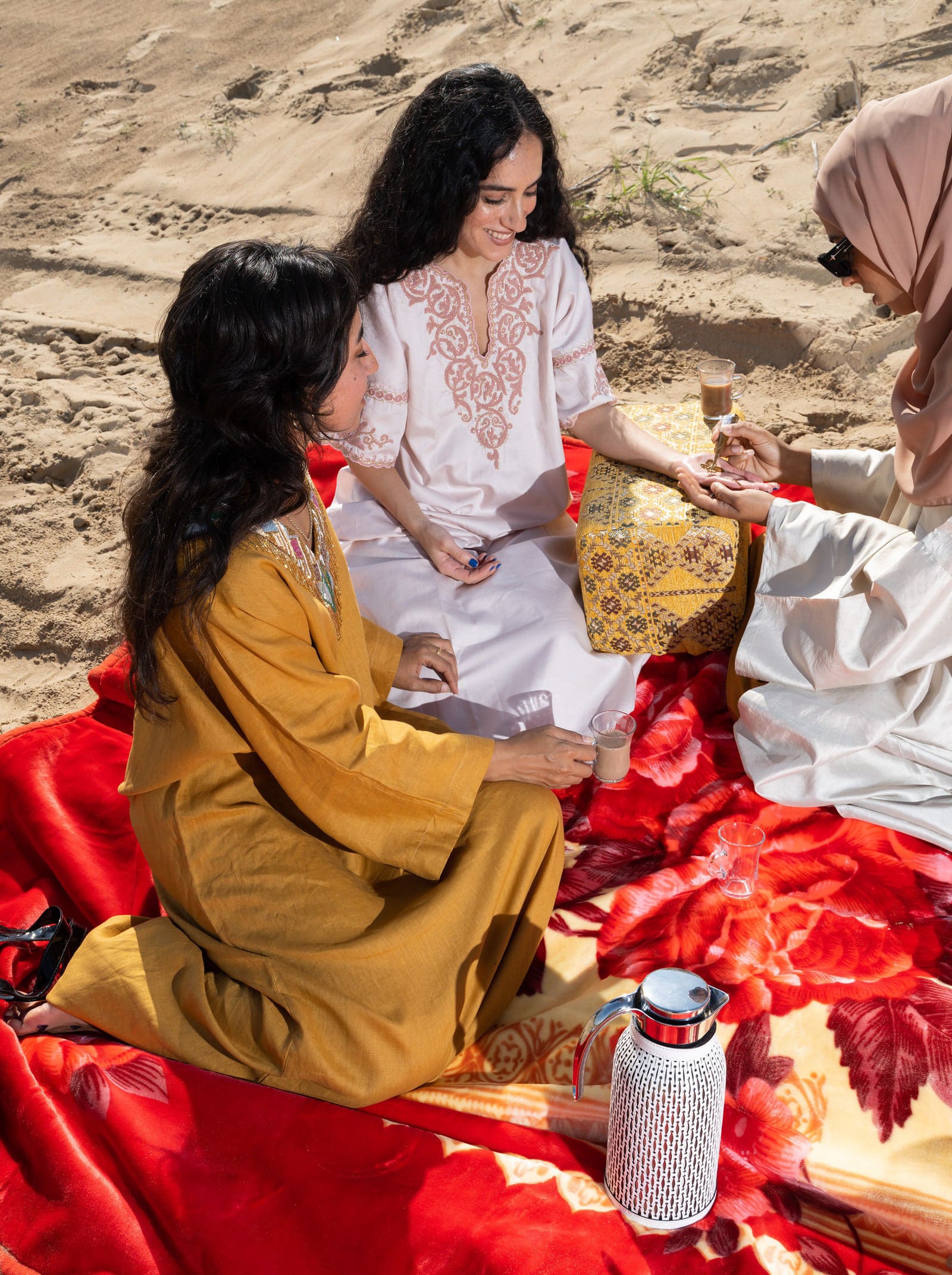
It’s evident that sisters Azra and Zahra Khamissa (the former known to many as @dr. azra), and artist Nourie Flayhan have the utmost regard for this most revered of plant dyes as they jointly attempt to acquaint me with its history over the course of a Zoom call patched between India and the Middle East. For millennials and Gen Zers who had relegated henna to “only for special occasions” status, Dr. Azra emerged as a firm crusader when she posted an image of her mehendi-stained fingertips caressing a camel’s face against the backdrop of Dubai’s arid desert. Since then, the chiropractor-turned-designer-turned-artist has spawned a revolution with her minimalist and graphic designs that have elevated henna beyond its traditional roots into an art form that many youngsters now deem “cool.”
Azra smiles modestly through the screen, insisting she had no intention of leading this new charge of henna that everyone credits her for. It all started serendipitously when she was at a friend’s The Wedding Trends That Are In—And Out—For 2023“>wedding a few years ago and was scrolling through Instagram, looking for simple designs that a novice like her could easily sketch on her hand. “I couldn’t find anything so I decided to do a traditional circle and paint my fingertips,” she recalls.

“Coincidentally, I had a photoshoot the next week for my handbag line and the model was running late so we ended up shooting my painted hands. The pictures turned out beautiful and got featured in i-D. After that, whenever there’d be a friend’s wedding, instead of doing the typical Indian or Arabic designs, I would look up Tunisian or Libyan references that I could do myself because they were so minimalist. Slowly, I started adding my own touches—changing a little bit here and there—because I had to wear henna to wedding occasions, and I didn’t want to sport the traditional designs. So really, all of this happened because I had to find a design language that suited my aesthetic.”
Henna wasn’t really a significant part of Nourie Flayhan’s culture, but growing up in Kuwait, the Lebanese illustrator came to appreciate the tradition that saw all her Kuwaiti friends get their hands adorned during the annual Muslim festival of Eid. Kuwait’s huge South Asian community also meant her Indian friends would often return from their travels with henna-stained arms and feet. “I remember feeling like it was almost a sisterhood ritual to be bound together by this common design on their bodies,” she smiles. “I would often sit in class and doodle designs on my hands and knees. My friends would encourage me to render them using henna tubes, but I never really understood or identified with the traditional designs even though I could appreciate the artistry.” That changed when she met Azra years later while visiting Dubai. “We were at a common friend’s place for movie night and she was sitting in the corner, quietly applying henna on her hand. When she had finished, I took a peek and saw this leopard print on the back of her palm—a departure from the usual flowers and swirls—and there was this instant connection. I was fascinated by how she was using a traditional medium to express herself.” This admiration would later culminate in a wonderful collaboration when Flayhan, commissioned by Azra, would design sticker stencils inspired by “tatreez,” Arabic for the cross-stitch embroidery style unique to the Levantine region, which could be used for easy application of henna using the mehendi cones Azra prepares.
Growing up Muslim in India, I was accustomed to my home being inundated by relatives when Eid came around every year. My mother would pass around cups of tea as the henna artists assiduously went about their work, emblazoning my relatives’ hands, while I was tasked with feeding them on account of my palms being dye-free. I still remember my relatives chiding me for being a “mehendi-abstaining tomboy”—a term I secretly derived great pleasure from because I had consigned henna to the “hobby of the elderly” compartment of my brain. I simply wouldn’t be caught dead in my baggy cargo pants, tank top, and ever-present sweatbands with orange-red curlicue patterns snaking up my arm.
I know I would have felt differently if, like Flayhan, I had seen Azra’s work back then and understood that there was a way for me to embrace this aspect of my culture without feeling like I had to sacrifice my individuality to do it. Azra beams when I point this out, but also confesses that she has immense respect for those who came before her. “For me, Indian and Arabic henna, especially the designs done on brides, is the pinnacle of the art form,” she says. “There are girls here who have been doing that style on their clients for years and they’re so fast that at this point, it’s like muscle memory.”
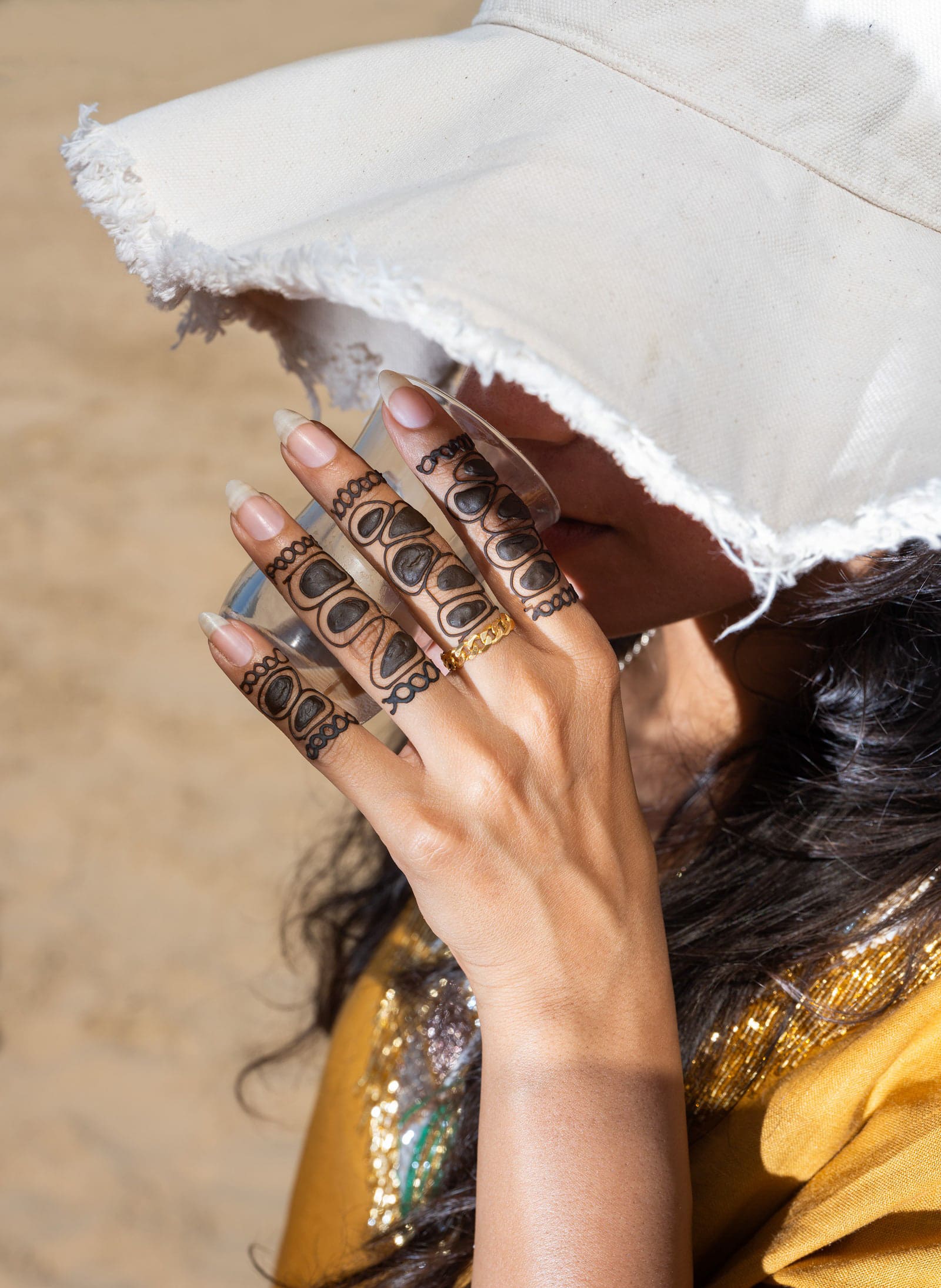
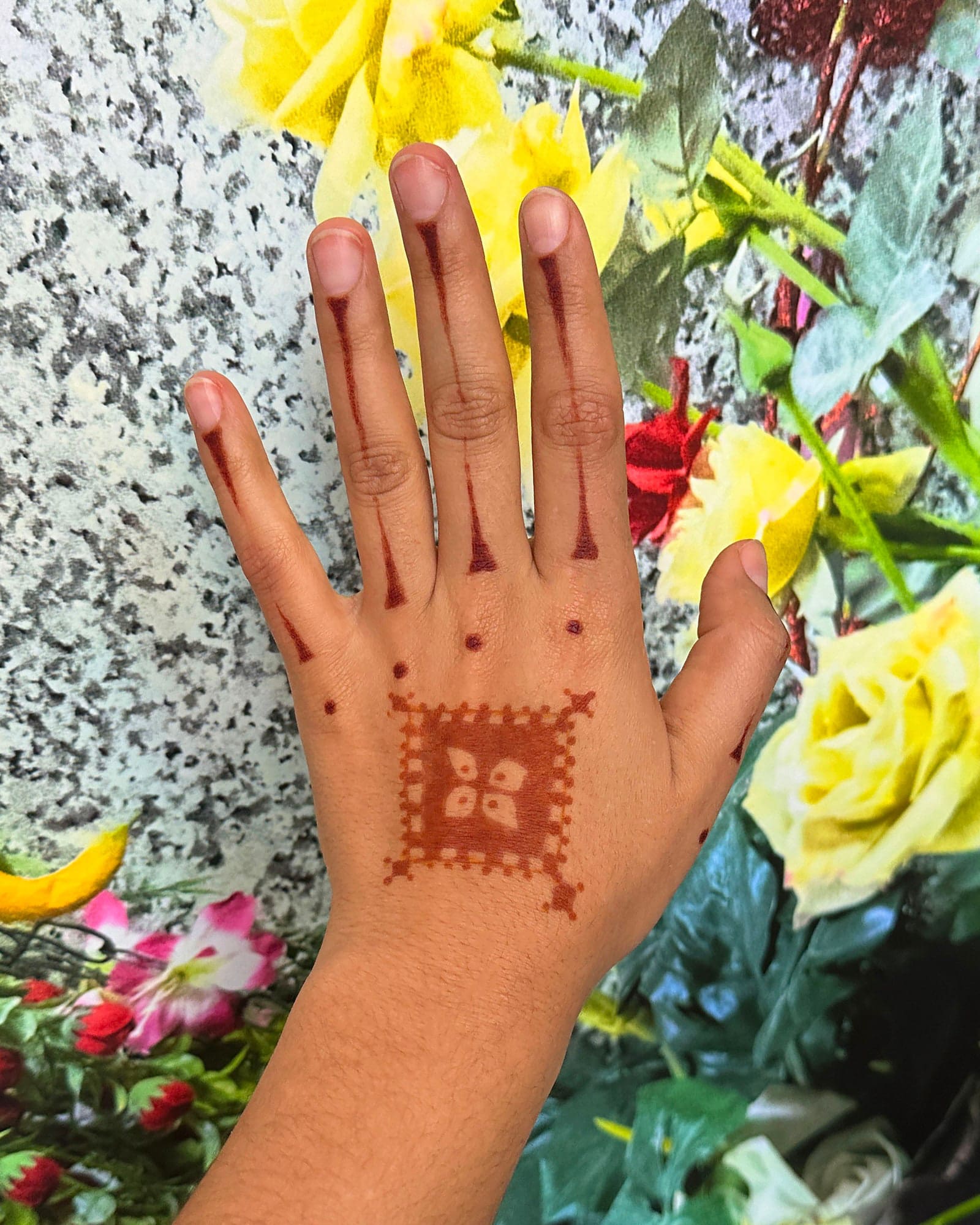
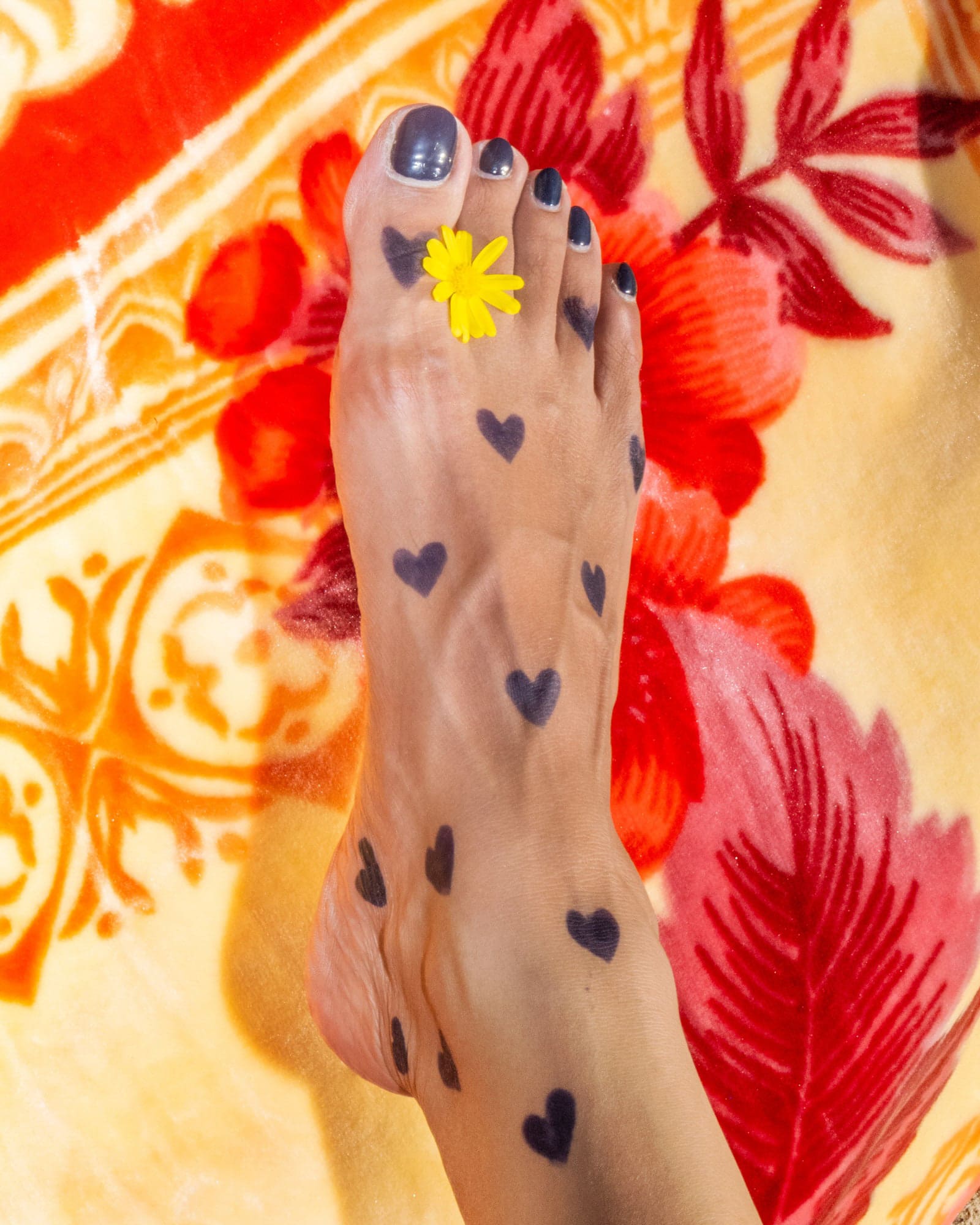
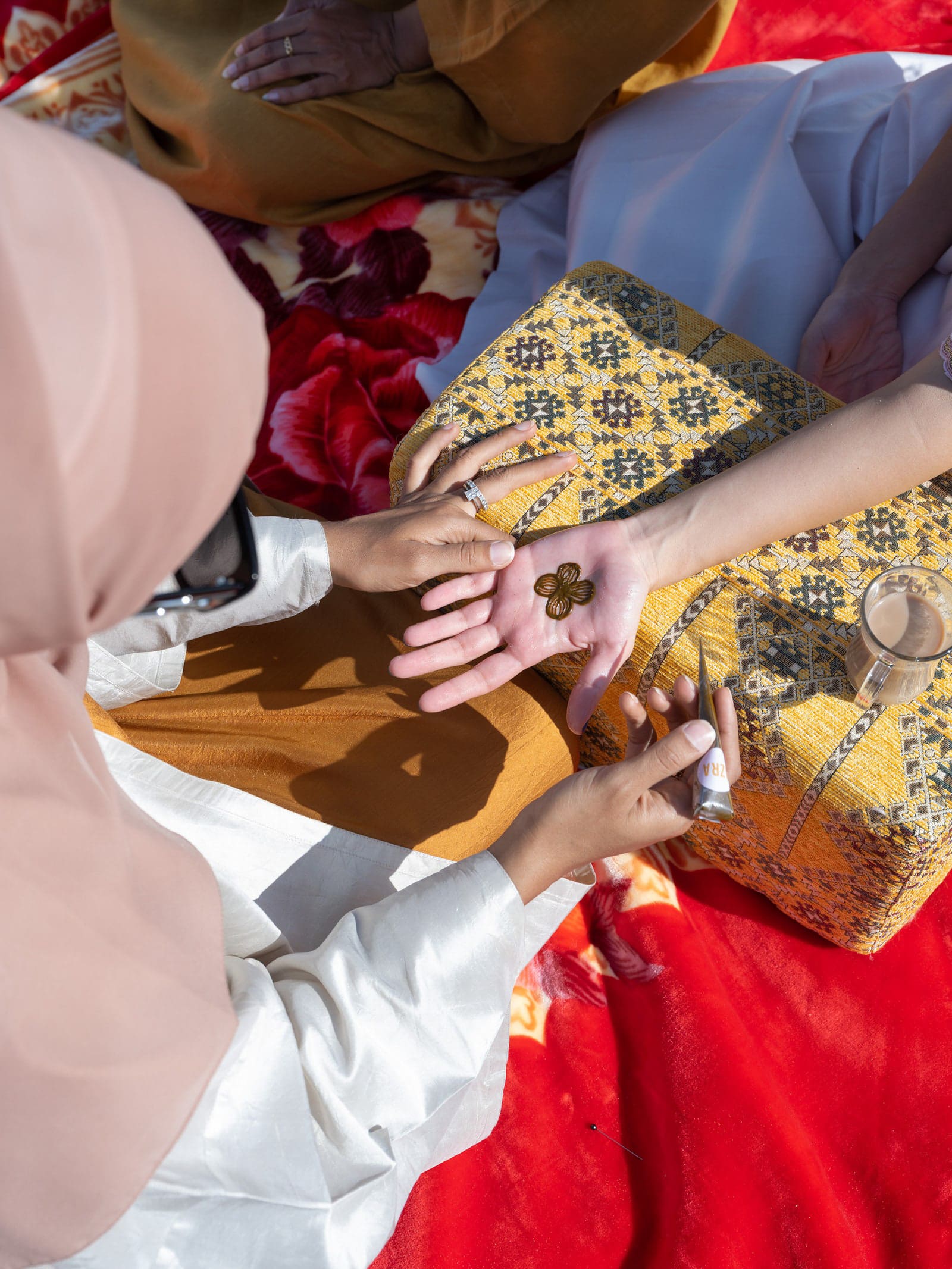
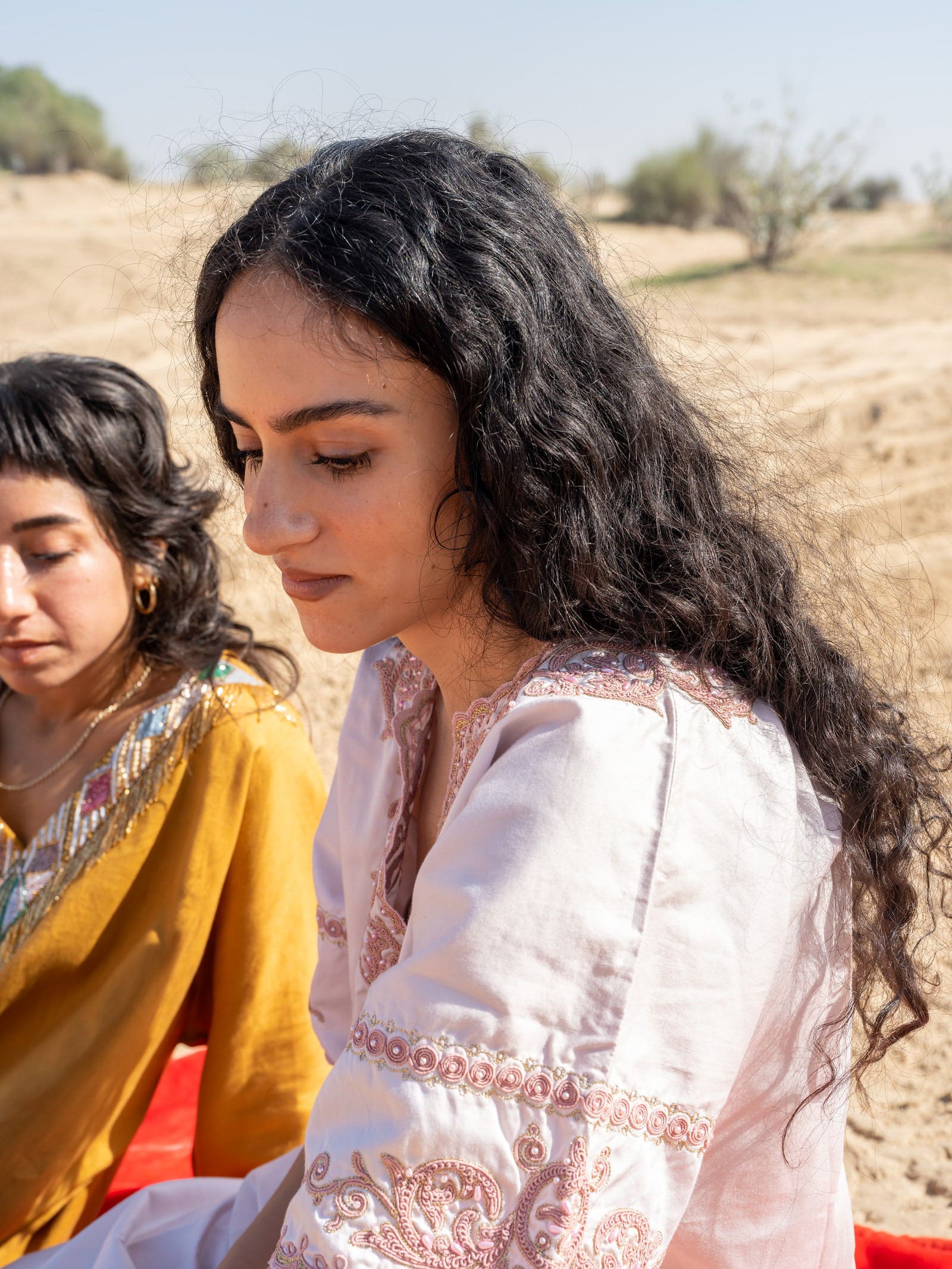
Some distance away, at the Indian Henna Art Centre in Abu Dhabi, which is known for traditional designs, Neelima Lavana seats her clients, succinctly instructing the artists working under her to get down to business with practiced precision. Started in 1984, when Emirati women had a greater predilection for mehendi than they do today, the Indian Henna Art Centre may well have seen the glory days of the art form with Lavana’s loyal roster of clients flocking to the salon at least once every two weeks.
“When we shifted to street level four years after we opened, the rush we had was unforgettable,” the Gujarat native says wistfully. “We actually had to request people to make way for us because there was absolutely no space to even move slightly. It was 8 AM and a horde of women were clamoring for henna. There were even men who came to buy cones for their wives. Chaos in the by-lanes, cars honking out in the street…it was pandemonium. There were 25-30 people in the salon at one point and I had only six designers. It was the kind of madness that I can’t quite begin to explain because I still haven’t been able to understand it myself.”

As more and more Emirati women join the workforce or are galvanized by the entrepreneurial spirit gripping the region’s youth, they are devoting lesser time to ancillary personal grooming, especially slower art forms like henna that require time and patience. But Lavana has faith that the tradition will endure despite this period of dormancy. When I convey Azra’s aforementioned words about “muscle memory” to the 64-year-old, she nods knowingly. “Henna is not an easy art to learn. Even if you’re a good artist, it takes months to gain control over the medium,” she confides. “When you’re drawing using a pencil or painting with a brush, it’s easy strokes, but with a cone, you have to release the precise amount of pressure. Learning that takes years of practice.”
If insights gleaned from Instagram are anything to go by (which, let’s face it, they are), there is burgeoning interest among younger generations for minimalist, culturally conscious henna styles. India-based mehendi artist Prabhleen Kaur, for example, finds inspiration in vintage textiles, local folk art and block printing as well as the flora and fauna of the region she hails from. Medina Trevathan, who lives in London, uses her identity as an interdisciplinary artist working with the sacred plant dye to delve deeper into Islamic, Sufi, and Celtic traditions. But another, and perhaps ever-present, contributor to this resurgence of henna in India is Bollywood and the slew of celebrity weddings that have taken place in the last few years.
From “Mehendi Laga Ke Rakhna” in Dilwale Dulhania Le Jayenge (1995) and “Mehndi Hai Rachnewali” in Zubeidaa (2001) to “Kabira” in Yeh Jawaani Hai Deewani (2013) and “Cutiepie” from Ae Dil Hai Mushkil (2016), some of the Indian film industry’s most iconic henna moments have found their way onto the mood boards of real brides alongside inspiration from the actual nuptials of A-listers like Anushka Sharma, Deepika Padukone, Katrina Kaif, Alia Bhatt and Kiara Advani. Zahra Khamissa, a writer and creative strategist, who often joins her sister Azra when she retires to her room for a therapeutic session of henna, concurs. “Nourie and I have discussed our obsession with Bollywood at length, and we both agree that Bollywood can eat Hollywood for lunch if given the opportunity. It exposed the world to henna-d hands and the ceremony of mehendi, and was responsible for setting the blueprint when it comes to the social significance of henna.”
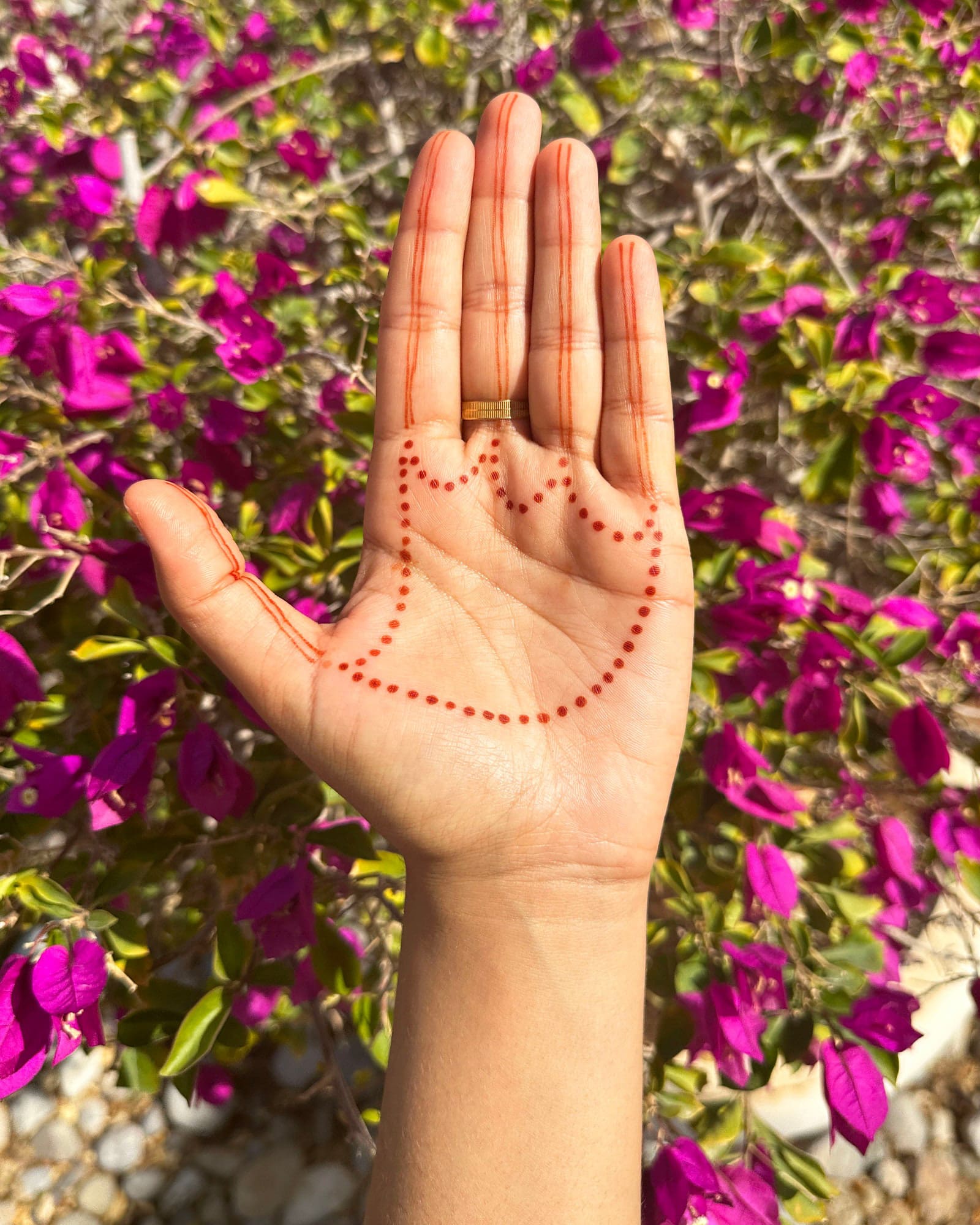

Many henna purists consider this new order of artists to be disruptors of a cherished tradition, modernizing the art form to such an extent that it loses its original charm. Azra, who has collaborated with the likes of Gucci and has been commissioned by Apple and Adidas, posits a valid counter: “I think that because there are people who are modernizing it, many people who may have lost touch with the ritual have a new way to bring it back.” Flayhan chimes in, “I don’t feel like one cancels the other. There will always be an appreciation for the traditional motifs in the same way that there are separate spaces for contemporary art, modern art, and cubism.”
Zahra, for her part, is more forthcoming in her response. “I really don’t think the traditional form is going to disappear because you can’t have the modern without the original. It’s like any design moment that has its phases. Let’s put it like this: the intricate curlicue pattern is the bona fide prototype and will always be there for those who need it. But maybe we can take a step back and allow something else to flourish for a little bit. I think this whole argument is about something much bigger and has to do with the younger generations rejecting tradition altogether.” In her trademark pithy parlance, Lavana shrugs. “It’s your body; do what you like. It’s going to remain for some time and will then fade away. You can change it like you change your clothes.”
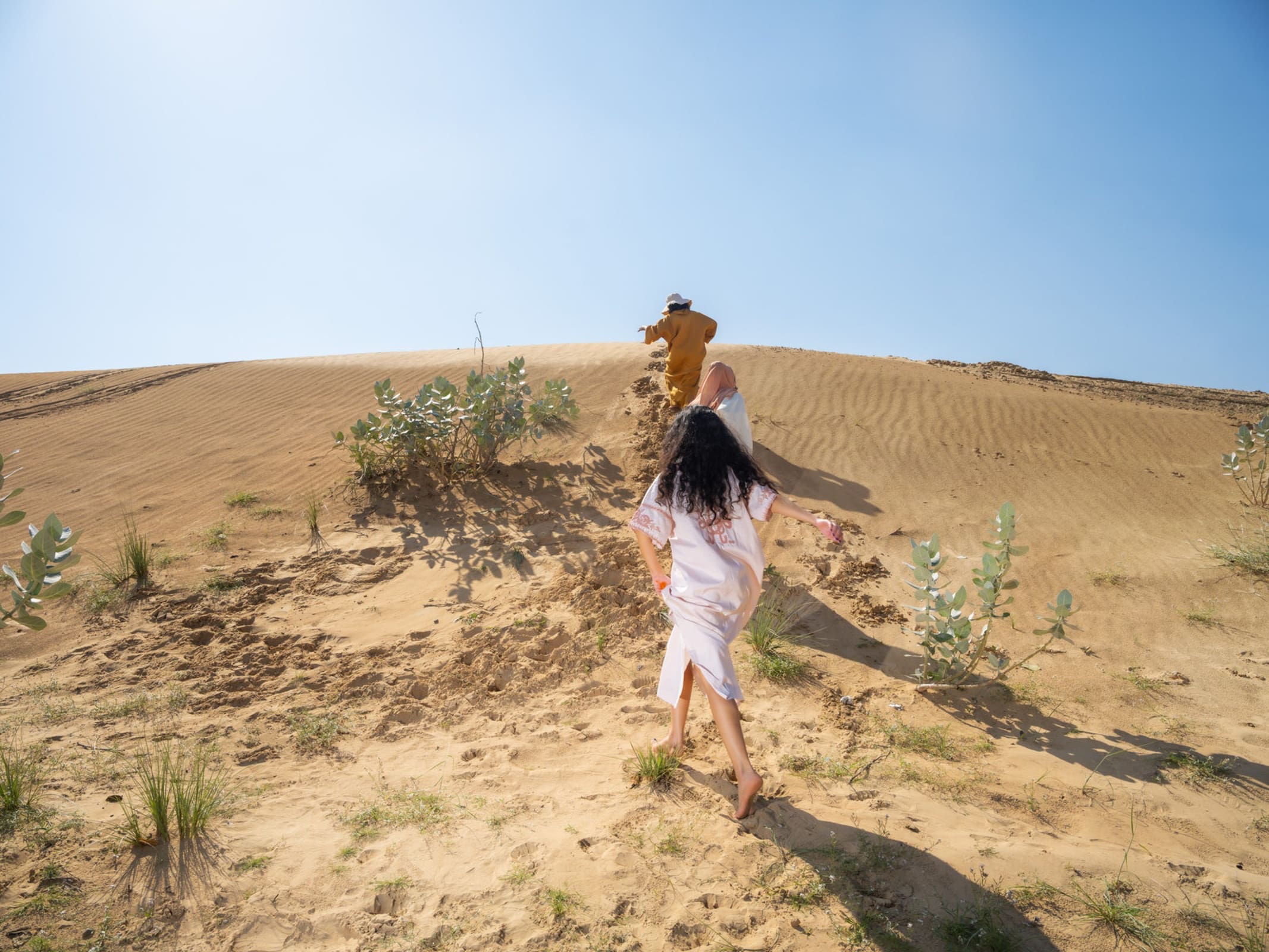
Photographed by Farah Al Qasimi
